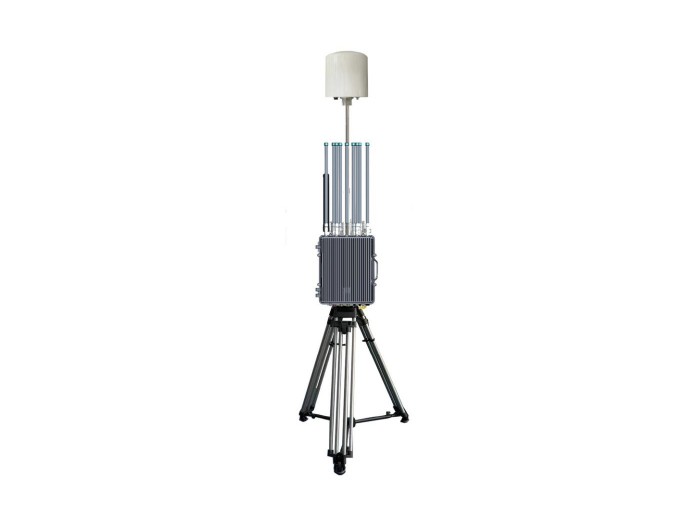Anti Unmanned Aerial Vehicle Weapons for Military: Securing Tomorrow’s Battlefields
In recent years, the rapid proliferation of unmanned aerial vehicles (UAVs), commonly known as drones, has transformed military operations worldwide. While UAVs offer immense tactical advantages, they also introduce new vulnerabilities, exposing forces to aerial threats that are often hard to detect and neutralize. The increasing incidents of hostile drone incursions into sensitive military zones have made it clear that effective anti unmanned aerial vehicle weapons for military are no longer optional but essential. Military commanders face the challenge of safeguarding personnel and assets against swarms of UAVs equipped with surveillance or even weaponry, necessitating advanced counter-drone systems tailored for defense.
This article explores the evolving landscape of anti-UAV technologies, highlighting industry trends, applications, and best practices that help maintain airspace superiority in high-threat environments. By understanding the core components and capabilities of these systems, defense professionals can enhance their operational readiness and protect strategic assets against emerging unmanned threats.
1. Understanding Anti Unmanned Aerial Vehicle Weapons: Definitions and Technologies
Anti UAV weapons encompass a broad range of technologies and tactics designed to detect, track, disable, or destroy hostile drones before they can impact military operations. As drone technology advances, these systems must evolve to address various UAV types—from small quadcopters to larger fixed-wing drones equipped for intelligence gathering or tactical strikes.
Fundamental to any anti-drone system is a combination of sensors and effectors:
- Detection: Radar, radio frequency (RF) detectors, electro-optical and infrared sensors identify UAV presence. According to a 2023 defense industry report, over 70% of military-grade counter-UAV systems incorporate multi-sensor fusion for enhanced detection accuracy in cluttered environments.
- Identification and Tracking: AI algorithms and signal analysis differentiate between friendly and hostile UAVs, prioritizing targets for engagement.
- Neutralization Methods: These include kinetic solutions like projectile launchers and directed energy weapons (lasers, high-powered microwaves), as well as electronic warfare techniques such as jamming and spoofing to disrupt UAV communications or navigation.
For example, the U.S. Army’s Counter-Unmanned Aircraft System (C-UAS) integrates radar-based detection with electronic jamming and kinetic interceptors, offering layered defense against drone threats during field operations. Such modular, scalable systems are increasingly viewed as benchmarks for future military applications.
2. Key Benefits of Deploying Anti-UAV Systems in Military Operations
Implementing advanced anti UAV weapons offers multiple strategic advantages that enhance battlefield resilience and mission success. Firstly, they provide critical force protection by mitigating the risks posed by reconnaissance or armed drones targeting personnel and high-value equipment. A recent case study noted a 45% reduction in drone-related battlefield incidents after deploying integrated C-UAS technology in conflict zones.
Secondly, anti-drone systems contribute to operational flexibility. By maintaining control over contested airspace, commanders can confidently operate with reduced risk of surprise attacks, enabling more aggressive maneuvers and improved intelligence exploitation. This benefit has proven vital in asymmetric warfare contexts where adversaries exploit commercial off-the-shelf drones for harassment or sabotage.
Additionally, these technologies enhance deterrence. The visible presence of capable anti-UAV defenses dissuades hostile entities from employing drone tactics, thereby reducing the frequency and intensity of UAV incursions. Beyond kinetic defense, electronic countermeasures also support cyber and communication security by intercepting hostile UAV data streams, preserving the integrity of military networks.
Overall, embedding anti-UAV weapons within military arsenal contributes significantly to maintaining air superiority, safeguarding assets, and ensuring mission continuity in increasingly contested environments.
3. Real-World Applications and Emerging Trends in Counter-UAV Technology

Across global armed forces, anti-UAV systems find diverse applications ranging from base perimeter defense to mobile battlefield units and protection of critical infrastructure such as command centers or logistics hubs. For instance, the Israeli Defense Forces deploy multi-layered C-UAS platforms that combine early warning radar with electronic jammers and interceptor drones to effectively counter UAV threats in real time.
Emerging trends indicate a move towards autonomous and AI-empowered anti-UAV systems that reduce operator workload and improve engagement precision. Autonomous sensor fusion enables ultra-fast detection and classification of drones, while networked defenders coordinate neutralization tactics adaptively. In 2024, defense researchers anticipate greater integration of non-kinetic directed-energy weapons capable of silently disabling UAV electronics at distance, minimizing collateral damage.
Moreover, the miniaturization of effectors now allows anti-UAV payloads to be mounted on existing platforms such as armored vehicles or aircraft, enhancing force mobility and responsiveness. In parallel, cyber-counterdrone tactics exploiting vulnerabilities in UAV software offer promising offensive capabilities that disable drone swarms without physical confrontation.
These innovations highlight the dynamic nature of anti UAV weapon development as military forces strive to outpace increasingly sophisticated drone threats.
Key Takeaways: Practical Tips for Military and Defense Decision-Makers
- Implement Layered Defense: Combine detection, electronic countermeasures, and kinetic options to build a resilient anti-UAV strategy tailored to your operational environment.
- Invest in Multi-Sensor Fusion: Enhance accuracy by integrating radar, RF, and optical sensors to reduce false alarms and improve target identification.
- Leverage AI and Autonomous Technologies: Utilize systems with AI-driven analytics and autonomous engagement to improve reaction times against high-speed or swarm drone attacks.
- Train Personnel Regularly: Conduct frequent drills and scenario-based training to ensure rapid and effective response to UAV incursions.
- Stay Informed on Emerging Threats: Monitor evolving UAV technologies and threat vectors to update your anti-UAV arsenal proactively. For detailed insights, contact our experts for personalized consultation.
Want to learn more about advanced counter-UAV solutions? Visit our website now!
Conclusion: Trust Our Expertise to Safeguard Your Airspace
As the battlefield evolves with the rapid rise of unmanned aerial threats, deploying effective anti unmanned aerial vehicle weapons for military becomes indispensable for modern defense forces. Our comprehensive expertise in cutting-edge counter-UAV technologies empowers military operators to confidently defend critical assets and maintain airspace control. By integrating multi-layered detection, electronic warfare, and kinetic solutions, we deliver robust systems engineered for today’s complex threat environment.
Protect your strategic interests and stay ahead of adversaries with our tailored anti-UAV platforms. Contact us today for a free consultation and begin enhancing your defense posture with trusted, innovative solutions.
















